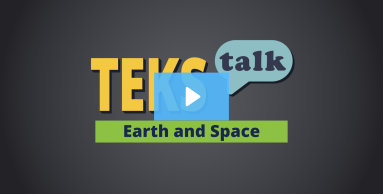
Knowledge and Skills Statement
Use a heat lamp and a rock to model how light from the Sun (the heat lamp) hits the Moon (the rock) and reflects towards the Earth, causing the Moon to appear to glow. Then give the students a piece of paper that shows an image of the Sun, Earth, and Moon. Ask students to draw a diagram that represents the demonstration they saw. Student drawings should demonstrate that they understand that the Moon does not generate its own light.
The further explanation is designed to be a resource for educators that helps them better understand the topic their students are learning. Further explanations may be written at a more complex level than would be expected for students at the grade level.
Safety note: People should never look directly at the sun.
A common misconception is that the Moon creates its own light. The Moon is made of rock and its surface reflects light from the Sun. In kindergarten, students identified the Sun, Moon, and stars as objects in the sky. They also learned that light passes through some objects and is blocked by others, creating shadows. This is the first time students are introduced to light being reflected.
Research
Hutchison, Paul. “Methods & Strategies: The Sun Is a Star?!” Science and Children 51, no. 3 (2013): 82–85. http://www.jstor.org/stable/43176626.
Summary: This article describes how to use a topic that students disagree on as a teachable moment when explaining that the Sun is a star. Many children do not assume the Sun is a star because it is so different than the stars students are used to seeing. To them, stars come out at night; they are small and dim. Students need to have the chance to think about and discuss how the Sun can be a star even though it is different from the stars they see at night. These conversations can be used as a formative assessment to check for understanding of the topic.
